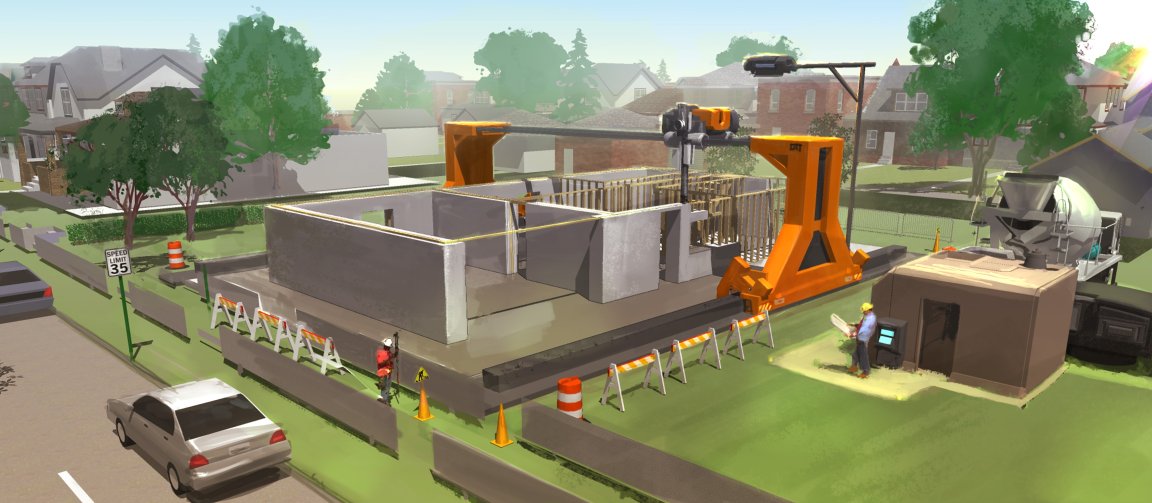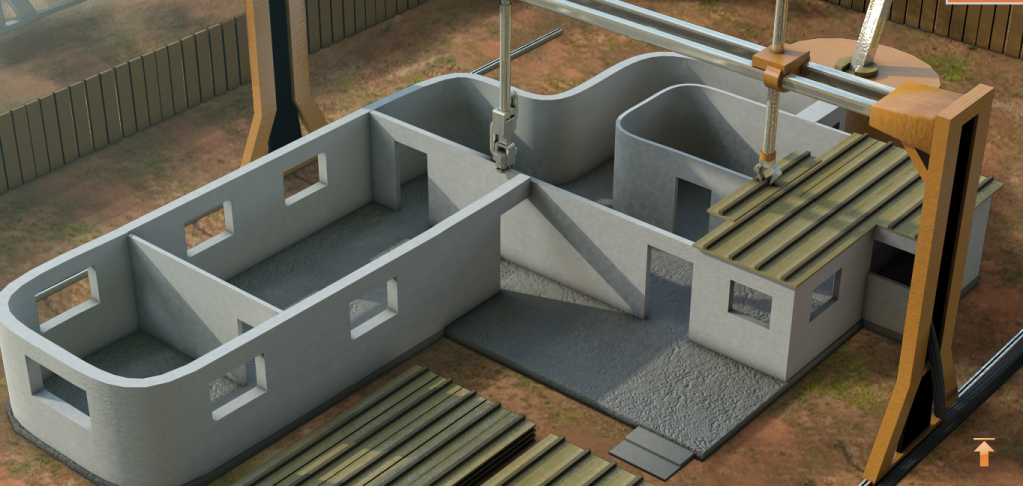
The Technology
Robotic construction system Contour Crafting (CC) has debuted their newest 3D-printing technology that can print entire homes on-site in less than 24 hours. CC’s technology doesn’t just build the architectural structure, it also prints the electrical, plumbing, and air conditioning features mid-construction, with no manual assembly required. Essentially, CC is printing homes in one shot with the basic utilities already embedded into their 3D-printed structures. It only takes 19 hours to print a 2,500 square foot home, at a rate of 20 seconds per square foot. This is a stark difference from the current US average of 6-9 months of development time. The whole process is done in only four steps:
- Flattening the required space.
- Using the excavating crane to create a foundation, which is then filled with concrete.
- The Contour Crafter is then positioned on top of a specially-made crane that keeps it from sinking in the mud, then it moves along the X,Y (height), and Z (crossbeam) axes.
- An extremely fast drying concrete is then pumped into the front of the CC, and the pipe system starts the construction of the house.

Although the system is not fully autonomous, it only requires four people to orchestrate the construction. CC also has different machines for different structures, such as large commercial buildings (multi-nozzle machine), tall skyscrapers (multi-story machine), and single detached residential buildings (standard printing machine).

Contour Crafting’s Mission
CC was developed at USC under the wing of Dr. Behrokh Khosnevis, and they hope to apply their revolutionary layered fabrication technology in commercial projects both “big and small,” hoping for it to have a huge impact on waste and cost reduction. He believes that with CC’s simplified technology, construction of towers, bridges, and other infrastructure can be done at a fraction of the time and cost. The company also says that any type of building can be customized with their tech – including 3D-printed pipes, tunnels, and other rounded commercial structures. Khosnevis hopes to build entire neighborhoods of these 3D-printed homes, and he plans to introduce CC to entry-level construction models on the market in 1-2 years. In the short term, the founders see an immediate value-add to using their technology for emergency reconstruction of homes during disaster relief situations.
